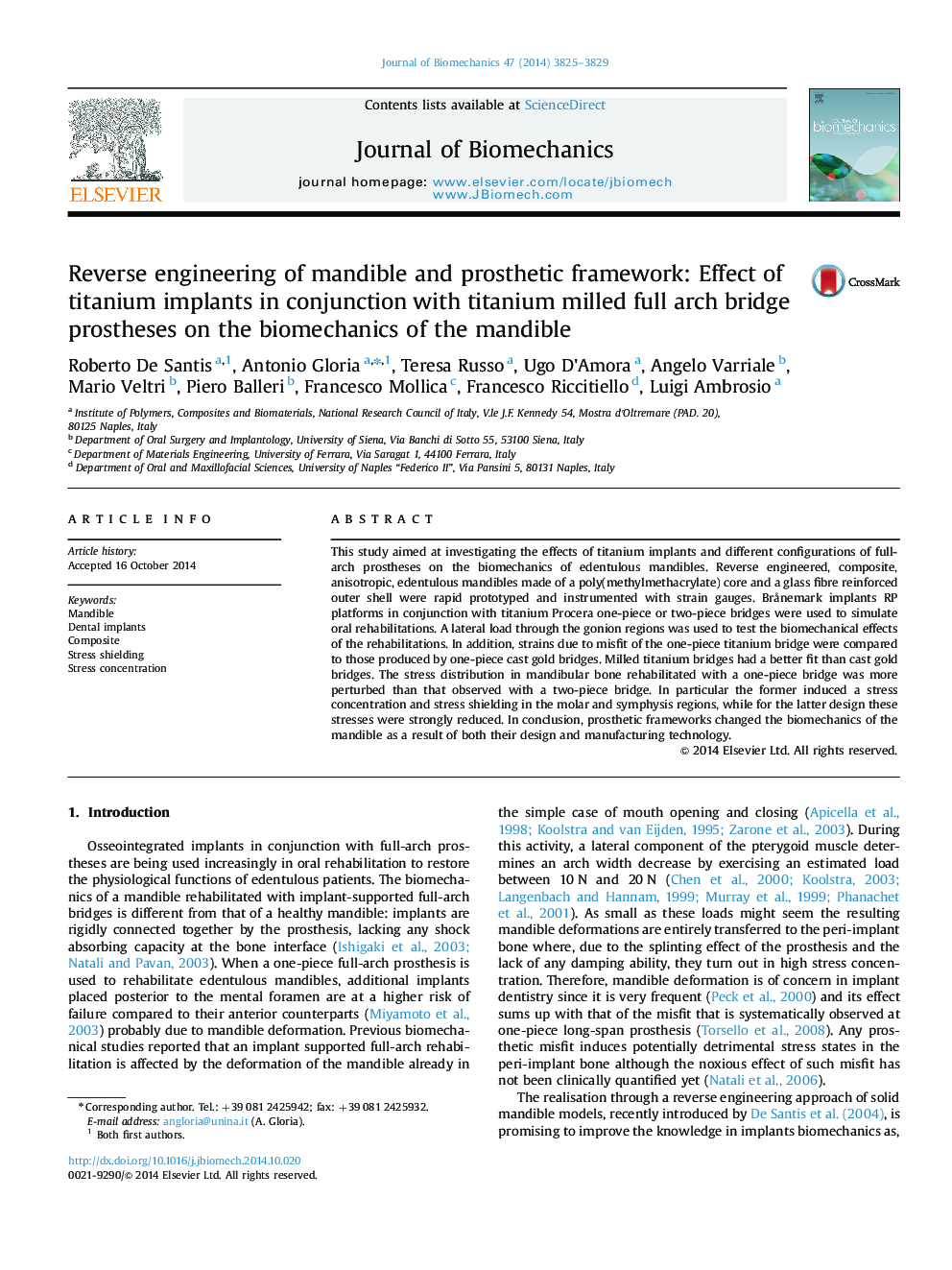| Article ID | Journal | Published Year | Pages | File Type |
|---|---|---|---|---|
| 871952 | Journal of Biomechanics | 2014 | 5 Pages |
This study aimed at investigating the effects of titanium implants and different configurations of full-arch prostheses on the biomechanics of edentulous mandibles. Reverse engineered, composite, anisotropic, edentulous mandibles made of a poly(methylmethacrylate) core and a glass fibre reinforced outer shell were rapid prototyped and instrumented with strain gauges. Brånemark implants RP platforms in conjunction with titanium Procera one-piece or two-piece bridges were used to simulate oral rehabilitations. A lateral load through the gonion regions was used to test the biomechanical effects of the rehabilitations. In addition, strains due to misfit of the one-piece titanium bridge were compared to those produced by one-piece cast gold bridges. Milled titanium bridges had a better fit than cast gold bridges. The stress distribution in mandibular bone rehabilitated with a one-piece bridge was more perturbed than that observed with a two-piece bridge. In particular the former induced a stress concentration and stress shielding in the molar and symphysis regions, while for the latter design these stresses were strongly reduced. In conclusion, prosthetic frameworks changed the biomechanics of the mandible as a result of both their design and manufacturing technology.
